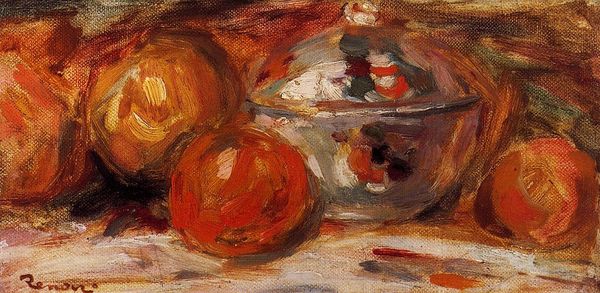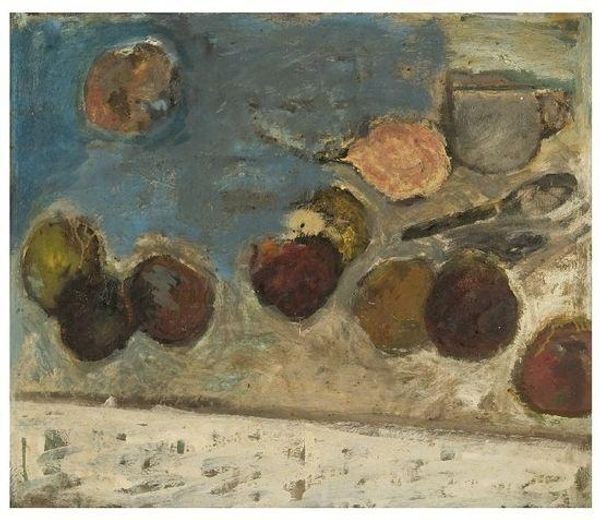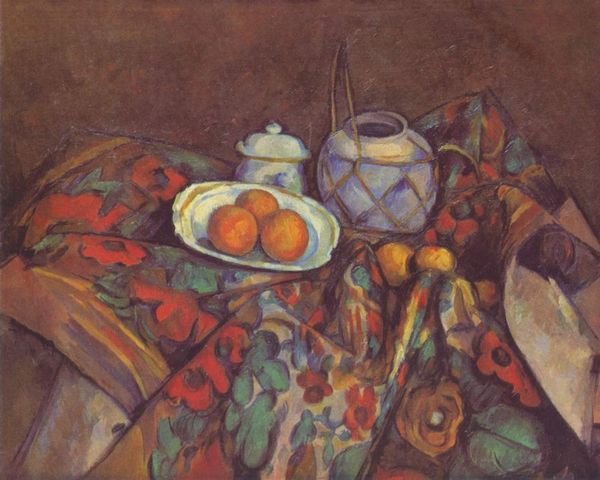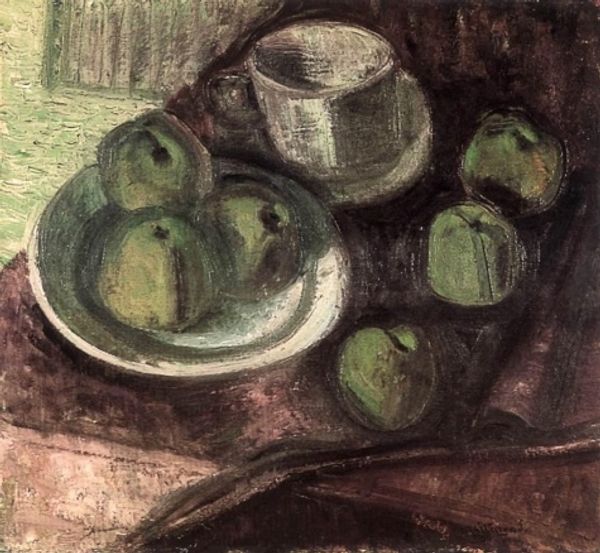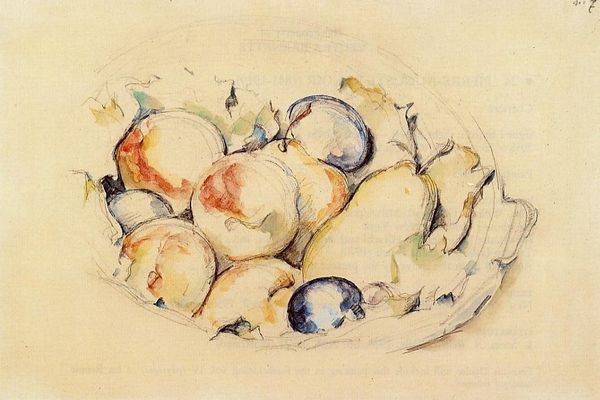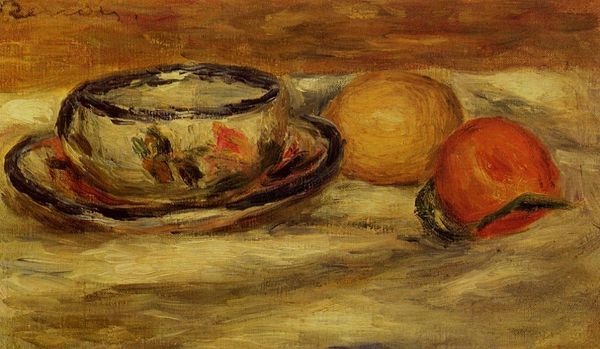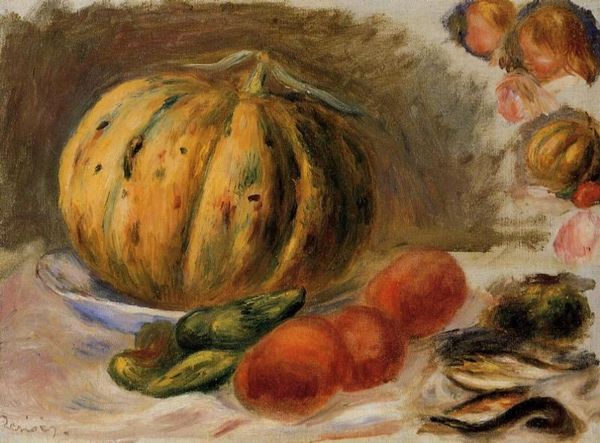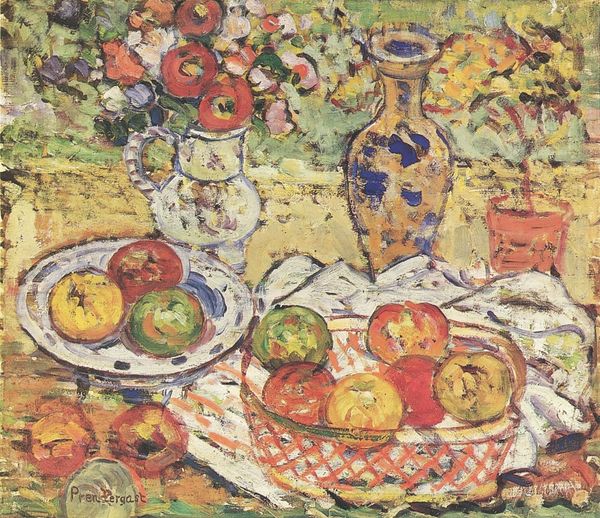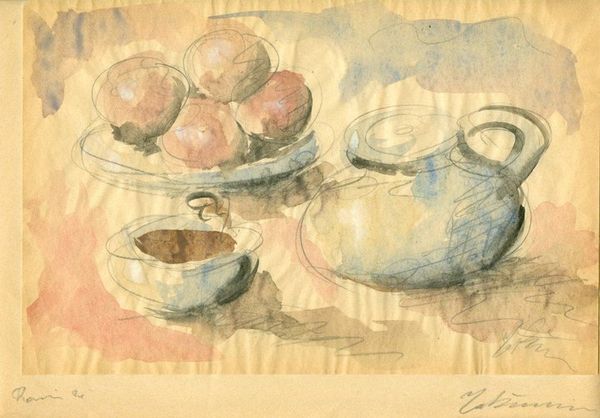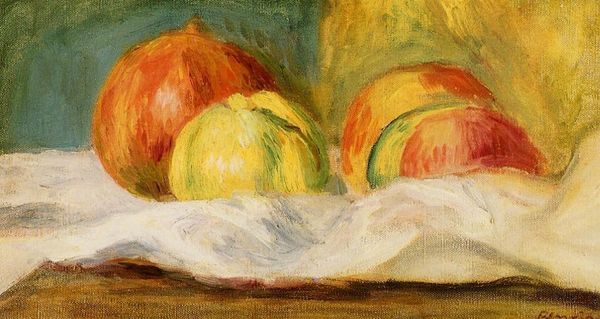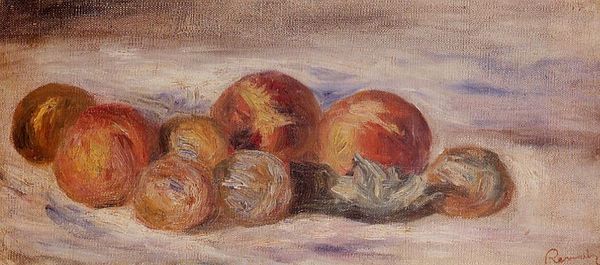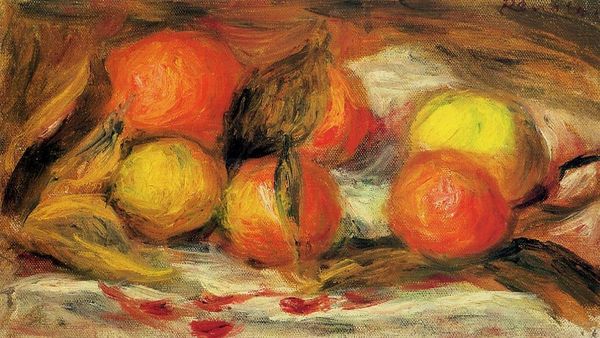
painting, watercolor
#
painting
#
landscape
#
oil painting
#
watercolor
#
fruit
#
post-impressionism
Dimensions: 16.5 x 25 cm
Copyright: Public domain
Curator: This is Paul Gauguin’s "Still Life with Fruit Plate," dating to around 1880. It's currently held in a private collection. What's your immediate response to it? Curator: Well, the color palette is quite muted, almost desaturated. There is something about the composition that feels tentative, a little unresolved. What strikes me is the simplicity of the everyday represented. Curator: Yes, let's unpack that a bit. Consider how Gauguin arranges these humble objects. Notice the strategic placement of the fruit, some clustered on the plate, others scattered, yet carefully balanced on the surface. He uses line and color in conjunction to push these elements forward. The tablecloth and background create a subtle interplay between object and ground. Curator: It does feel less staged, doesn't it? Moving beyond purely formal concerns, what was Gauguin attempting to say about society during this early period in his oeuvre? One ponders the accessibility, if perhaps affected, of bourgeois life when translated into artistic output. Curator: An interesting reading, certainly, but it's also worth exploring Gauguin's technique here. Observe how he achieves depth and texture with a delicate watercolor, yet also incorporates bold line to render depth. There’s an intriguing tension between flatness and three-dimensionality in his approach. Curator: I do appreciate your attention to the structural elements, although my impulse is always to question the artist's position in society. These still lifes have historical narratives embedded into them and ask us about the politics and personal world views present when choosing the most simple subjects such as fruit. Curator: Undoubtedly. Although, one could equally argue the enduring appeal of the genre itself—a study in forms, volumes, colors—which moves beyond, or even predates the immediate circumstances. Curator: Food itself carries so many cultural and social codes. By portraying this fruit in this particular way, Gauguin also inserts it into larger conversation about class and consumption, right? Curator: The composition is remarkably efficient and spare—even, you could say, stark. Curator: On reflecting over Gauguin’s Still Life with Fruit Plate, the simplicity makes it compelling and draws our gaze, don’t you agree? Curator: Indeed. There is much to consider within its simple forms.
Comments
No comments
Be the first to comment and join the conversation on the ultimate creative platform.
